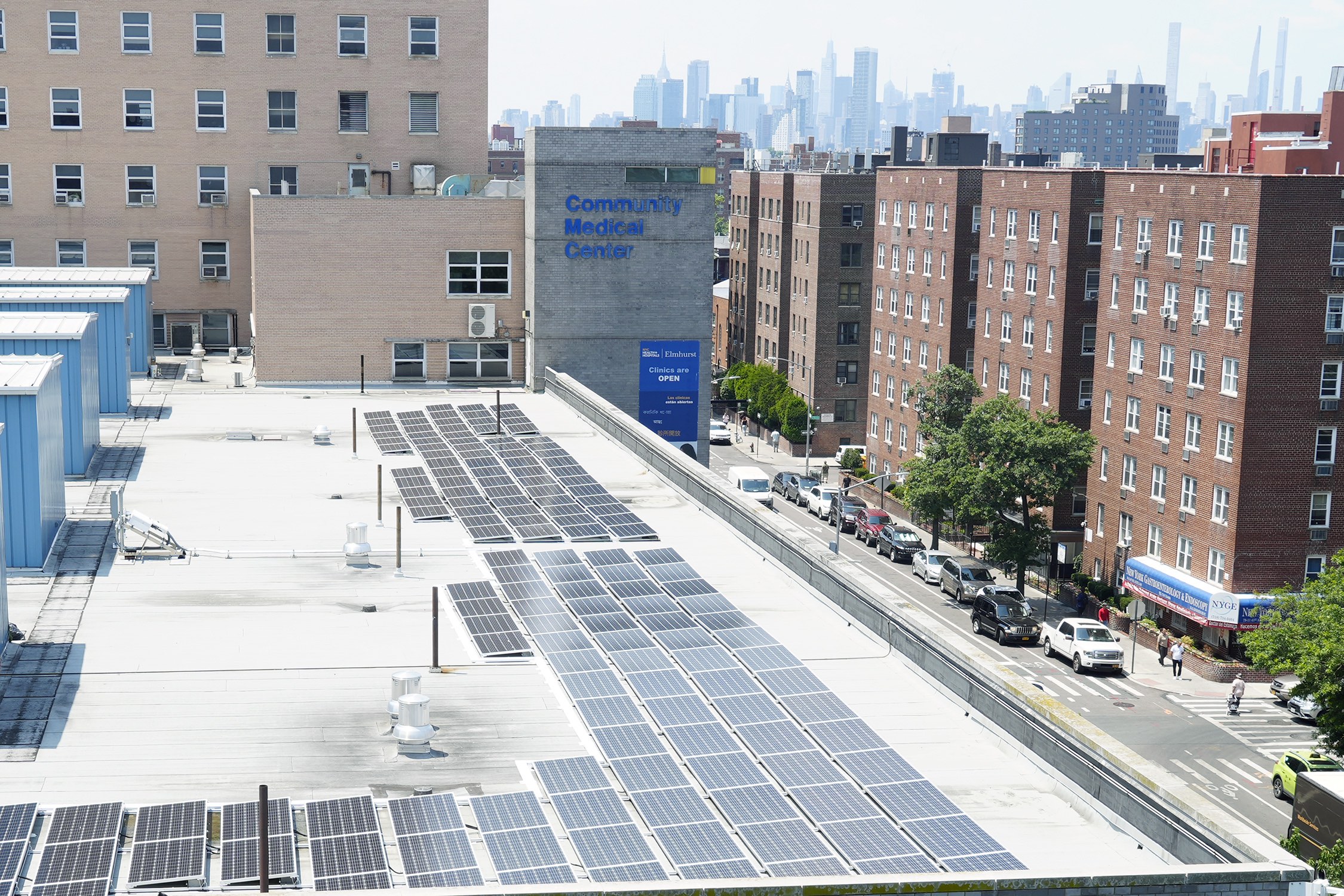“Setting our sights on the future, I am confident in the city’s ability to not only catch up with, but actually surpass Local Law 97’s next target: a 50 percent carbon emission reduction goal by fiscal year 2030.”

As Earth Week celebrations begin anew, and the eyes of the world once again turn towards our collective progress in the fight against climate change, for me and for my staff at the Department of Citywide Administrative Services (DCAS), it’s a time for not only great optimism, but also celebration and renewed commitment to environmental stewardship.
Since joining DCAS as the city’s chief decarbonization officer eight months ago, it feels as though I have arrived at an opportune moment, on the verge of accomplishing something remarkable. In spite of unprecedented challenges, this team has remained steadfast in our mission to promote sustainability and combat climate change in New York City.
To address one of our most pressing concerns head-on, we expect to reach the first of Local Law 97‘s emissions targets―a 40 percent reduction below 2006 levels―in fiscal year 2027, two years behind the 2025 deadline.
When LL97 was passed in 2019, which set carbon emission reduction targets for privately owned buildings and city government buildings, we knew we had little time to scale up our project pipeline and lay the groundwork for change. We could not have predicted, however, that a global pandemic would occur less than a year later, and that its impacts would be seismic, and still felt today.
Setting our sights on the future, I am confident in the city’s ability to not only catch up with, but actually surpass LL97’s next target: a 50 percent carbon emission reduction goal by fiscal year 2030.
Part and parcel of this mission, and in addition to our standard renewable energy projects such as electric vehicle infrastructure expansion, and solar panel installations on rooftops–which are undeniably crucial―we are also, quite literally, getting our hands dirty like never before, ripping out fossil-fueled building systems and installing new, high-efficiency electric equipment across the city. This work isn’t just about meeting targets; it’s about reaping tangible benefits for our communities by creating cleaner air through the phasing-out of fossil fuel infrastructure and making our buildings cleaner and more comfortable for their occupants.
Looking forward to 2030 and beyond, we need to keep several critical points in mind. First, to achieve our goals at the necessary scale, we need to continue investing in our green workforce, which has been a priority under this administration. Programs like the Agency Energy Personnel (AEP) initiative, which brings on energy management professionals at agencies to spearhead energy and emissions reduction efforts, and the Energy Management Institute (EMI), which trains city staff on energy management best practices, ensure that the city’s energy professionals are equipped with the knowledge and skills needed to drive meaningful change.
Second, we must shift away from business as usual and commit ourselves to phasing-out fossil fuel infrastructure. Take, for instance, our commitment to electrifying existing schools through the Leading the Charge program. This $4 billion initiative signifies a departure from fossil fuel dependency, setting the stage for a cleaner, more sustainable future, particularly in disadvantaged communities (DACs). To date, nearly 60 percent of emissions reductions from city government operations have been in designated DACs.
Finally, in order to sustain energy and emissions reductions and ensure the longevity of energy systems, the city’s buildings must be operated and maintained effectively. We must continue to put our efforts into preventative and predictive maintenance, rather than reactive maintenance only when equipment breaks. In response to this challenge, DCAS is increasingly prioritizing the implementation of advanced building controls and analytics to get a clearer understanding of the performance of building equipment at any given time, and to optimize the functioning of building systems so they run as efficiently as possible.
So far, these tactics are working, and have yielded significant results, not just in terms of emissions reductions but also in job creation and cost savings. Since 2014, we have completed over 5,000 energy projects, and over 14,000 energy conservation measures across more than 2,300 unique buildings. These projects are estimated to have created 5,300 jobs in the construction industry and related sectors, and saved New York taxpayers over $125 million in energy costs.
Looking ahead, our commitment to sustainability and carbon reduction remains resolute, as we work towards 50 percent reduction by 2030 and set the pathway for the long-term goal of carbon neutrality by 2050. These goals will also only further benefit from continued support from the state in the form of authorizing the use of progressive design-build in emission reduction projects.
While the road ahead may be challenging, with continued determination and collaboration, we are building a greener, more sustainable city for generations to come. We all have an important role to play and together, we can turn challenges into opportunities and pave the way for a brighter, more sustainable future for all. I for one, am excited by this progress, and the promise of a greener New York City for all.
Sana Barakat is New York City’s chief decarbonization officer and the deputy commissioner for energy management at the NYC Department of Citywide Administrative Services.







